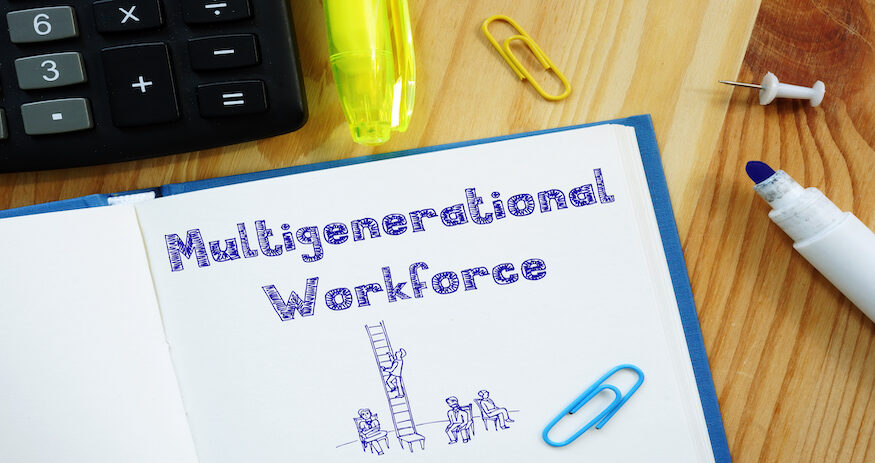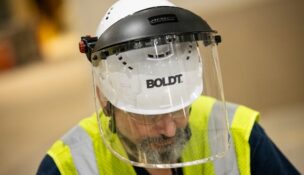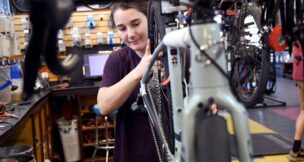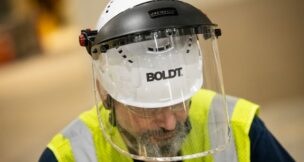Addressing Generational Differences in the Workplace: The Power of Flexibility in Modern Business Culture
Learn how modern businesses are integrating flexibility to meet the diverse needs of a multigenerational workforce.
Kathleen Quinn Votaw //May 9, 2024//


Addressing Generational Differences in the Workplace: The Power of Flexibility in Modern Business Culture
Learn how modern businesses are integrating flexibility to meet the diverse needs of a multigenerational workforce.
Kathleen Quinn Votaw //May 9, 2024//
Your company name is just a label.
Unless it’s backed by a widely recognized reputation, jobseekers won’t care what it is.
What people do care about is that you listen to them and understand that the key to their overall wellbeing is, in many cases, flexibility. They want to work for an employer who lets them choose what works best for them.
Integrating flexibility into your culture allows your people to do what they love and contribute their best work to your company rather than a competitor’s.
READ: Best Hybrid Work Strategies — Success in the Post-Pandemic Corporate World
Work through a lens of flexibility
Work and personal lives are inseparable, and one size cannot possibly fit all.
Work environments today barely resemble those of even the near past. Not understanding and accepting what employees want today makes it nearly impossible to compete for the top talent you need to grow.
What people want is choice about where, when and how they work.
There’s no need to label work “remote,” “onsite” or “hybrid.” It can be counterproductive to mandate those or any other type of work option. Instead, build choice into every possible aspect of your culture.
Until recently, there were only two or three generations in the workplace at any one time. They shared similar life experiences and cultural traditions as well as a slower pace of change than we have today. Many people put expectations aside and settled for simply having a job.
Now there are five generations working together in an environment of constant change.
Traditionalists, baby boomers, generation X, millennials and generation Z represent employees from ages 16 to 75. Their values and expectations characterize the particular aspirations, challenges and lived experiences of their era. And, naturally, they differ widely.
This age gap and cultural divide can cause generational differences in the workplace that need to be addressed.
READ: How Business Leaders Can Embrace a Multigenerational Workforce
HR thought leader and author, Josh Bersin, points out in a recent report that we must reinvent our companies faster than ever, and certainly faster than the competition. As the labor force continues to shrink, he advises companies to, among other things, “hoard talent, and redevelop and redeploy people for growth.”
In other words, make flexibility the foundation for your cultural DNA. Constant change has become the defining feature of worklife and it requires equally constant flexibility.
Glassdoor research serves as punctuation. Gen Z, defined by rapid change, will overtake boomers in terms of workplace numbers this year and dominate the workforce in the years to come. In addition to expecting and inviting change, Gen Z brings their own set of values to workplace cultures. They care deeply about community connections, being heard, transparent and responsive leadership and diversity and inclusion.
“Zoomers” question everything and everyone and value collaboration and teamwork, mental health and work-life balance. Taken together, these factors are bringing “a pivotal moment of cultural change” to organizations.
Forbes’ research puts the flexibility lens into numbers: Across the generations, an overwhelming 79 percent of respondents prioritize flexible work options, with 64 percent highlighting the need for flexible parental leave and 62 percent emphasizing access to mental health resources.
READ: Mental Health Diet — Gen XYZ’s Embrace of “Healthy” Snacks
Rethinking and reinventing
Remote/hybrid work options provide an illustration of what reinvention can look like through the lens of flexibility.
Younger workers are often more open to working onsite because they haven’t had a chance to fully experience it yet. Workers with kids appreciate the potential to save childcare costs and the opportunity to be at home with their families. Mid-life employees may have caretaking responsibilities for elderly parents, and employees of any age may have caregiving responsibilities at home.
Some people like the connection and opportunity that onsite work provides. Others believe they are more productive working from home.
While where and when to work are the most talked-about topics related to flexibility, consider other aspects of your culture where you can increase employees’ options. People also value flexibility in:
- Benefits: Provide a wide range of benefits that allow employees to choose the ones they need.
- Communication: Use various delivery formats to ensure everyone gets the messages and feels their participation is valued.
- Training & Development: Support people in their growth by allowing them to apply for internal jobs and move up, down or horizontally to meet their personal career goals in a role that suits them.
- Teams: Provide opportunities for team development, collaboration and upward communication, which help squash biases and encourage cross-generational teamwork.
- Mentoring: Develop a mentoring program to ease generational differences in the workplace and serve as a tool to share experience, skills and knowledge.
- Work Styles: What makes a personal ideal work environment ranges from structure and fixed schedules to rejection of everything traditional.
When a large majority of employees considers flexibility a priority, employers competing for talent must listen. By making options and choosing key elements of your culture, you elevate your recruiting and retention efforts along with morale and spirit.
The result is greater business growth.
Kathleen Quinn Votaw is Founder/CEO and Speaker/Author of TalenTrust and KQV Speaks. Her first book, Solve the People Puzzle: How High-Growth Companies Attract and Retain Top Talent, debuted in February 2016; with the second book, Dare to Care in the Workplace: A Guide to the New Way We Work and related Podcast launched between 2021-2022. Kathleen and her firm have achieved many recognitions from many well-known organizations, including ColoradoBiz Magazine, Vistage Worldwide, and the coveted Inc. 5000 for two consecutive years. Kathleen is a regularly published columnist and popular speaker on topics related to HR strategies and workplace culture. Reach Kathleen at [email protected] or (303) 838-3334.
t
























